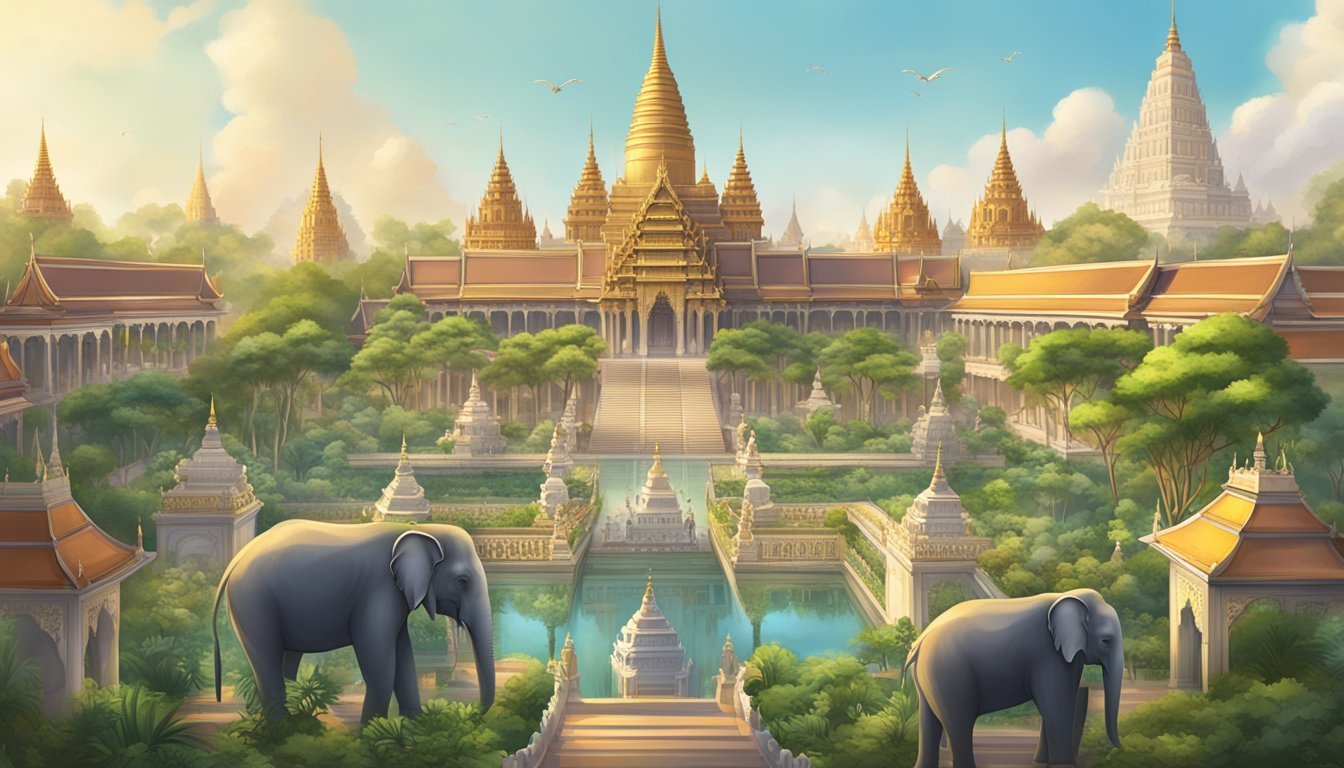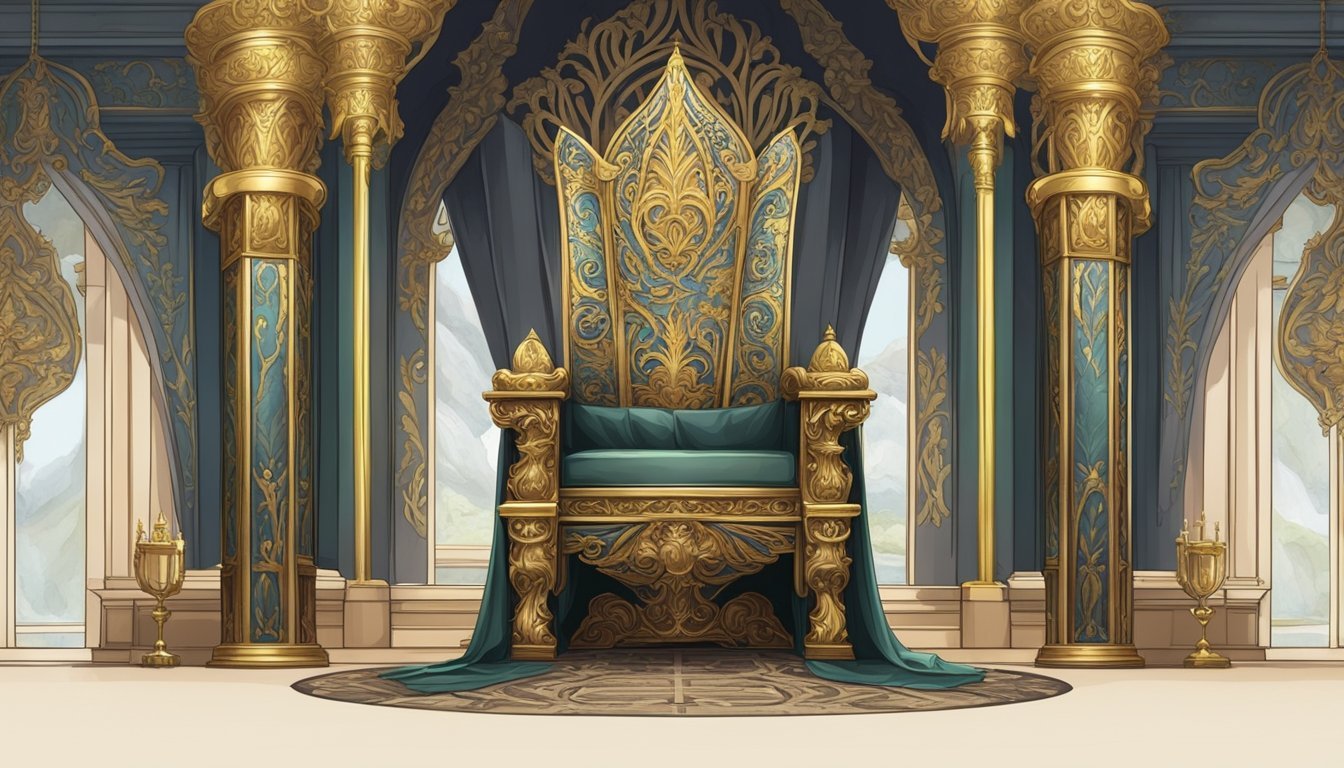6 Films on the Life and Reign of Akbar the Great
Cinematic Portrayals of a Mughal Emperor
Akbar the Great, the third Mughal emperor, ruled over a vast empire in India during the 16th century. His reign marked a golden age of cultural and religious tolerance, military conquests, and administrative reforms. Akbar's life and accomplishments have captivated historians, artists, and filmmakers for centuries.
Several films have portrayed the life and reign of Akbar the Great, offering viewers a glimpse into the Mughal era and its most famous ruler. These cinematic works blend historical facts with dramatic storytelling to bring Akbar's world to life on screen. From his early struggles to his greatest achievements, these films explore different aspects of Akbar's character and legacy.
1) Mughal-E-Azam
Mughal-E-Azam stands as a monumental achievement in Indian cinema. Released in 1960, this epic historical drama took 16 years to complete under the direction of K. Asif.
The film depicts the love story between Prince Salim and the court dancer Anarkali, set against the backdrop of Emperor Akbar's reign. Prithviraj Kapoor portrays Akbar, while Dilip Kumar and Madhubala play the star-crossed lovers.
Mughal-E-Azam is renowned for its lavish production values and attention to historical detail. The film's elaborate sets, costumes, and musical numbers recreate the opulence of the Mughal court.
Beyond its romantic plot, the film explores themes of power, duty, and the conflict between personal desire and political responsibility. It presents a nuanced portrayal of Akbar as both a stern ruler and a conflicted father.
The film's enduring popularity led to a digitally colored re-release in 2004, introducing it to new generations of viewers. Mughal-E-Azam remains a benchmark for historical epics in Indian cinema, celebrated for its grand vision and emotional depth.
2) Jodhaa Akbar
Jodhaa Akbar is a 2008 Indian historical drama film directed by Ashutosh Gowariker. The movie stars Hrithik Roshan as Emperor Akbar and Aishwarya Rai Bachchan as Jodhaa Bai.
The film depicts a fictionalized account of the marriage between Akbar and the Rajput princess Jodhaa. It explores their relationship as it evolves from a political alliance to a genuine love story.
Set in the 16th century, Jodhaa Akbar showcases the grandeur of the Mughal Empire. The movie's lavish production design and costumes bring the era to life on screen.
Jodhaa Akbar focuses on themes of religious tolerance and cultural unity. It portrays Akbar's efforts to bring together diverse communities within his empire.
The film received critical acclaim for its performances, music, and visual spectacle. It won several awards, including Best Film at the Filmfare Awards.
While taking some creative liberties with historical facts, Jodhaa Akbar offers an entertaining glimpse into Akbar's reign. The movie presents a romanticized version of the emperor's life and relationships.
3) Akbar the Great
Akbar, born in 1542, was the third Mughal emperor and is widely regarded as the greatest ruler of the dynasty. He ascended to the throne at a young age following his father Humayun's death.
During his reign from 1556 to 1605, Akbar greatly expanded and consolidated the Mughal Empire across the Indian subcontinent. He implemented innovative policies that promoted religious tolerance and cultural integration.
Akbar's military conquests were complemented by his administrative reforms. He established a centralized government system and introduced policies aimed at unifying his diverse subjects.
The emperor was known for his patronage of the arts, literature, and architecture. He commissioned the construction of magnificent buildings and encouraged scholarship at his court.
Akbar's religious policy, known as Din-i-Ilahi, sought to blend elements from different faiths. This approach reflected his desire for unity and understanding among his multicultural empire's population.
His reign is often considered a golden age in Indian history, marked by relative peace, prosperity, and cultural flowering. Akbar's legacy as a visionary leader and skilled administrator continued to influence the Mughal Empire long after his death in 1605.
4) The Sword of Tipu Sultan
The Sword of Tipu Sultan is an Indian historical drama series that aired on DD National in 1990. Based on Bhagwan Gidwani's novel of the same name, the show portrays the life and times of Tipu Sultan, the 18th-century ruler of Mysore.
The series chronicles the true historical events in the lives of Haider Ali and Tipu Sultan. It gained widespread acclaim for its grand production values and stellar cast.
Sanjay Khan played a significant role in bringing this epic to the screen. The show was highly popular during its time and is remembered for its historical accuracy and high production quality.
While not directly related to Akbar the Great, The Sword of Tipu Sultan represents another important chapter in Indian history. It depicts the resistance against British colonization efforts in India.
The series showcases the cultural richness and political complexities of 18th-century India. It remains a notable contribution to historical dramas on Indian television.
5) Anarkali
Anarkali is a legendary figure in Mughal history, immortalized in various films about Emperor Akbar's reign. The story of her forbidden love with Prince Salim, later Emperor Jahangir, has captivated audiences for generations.
Several films have depicted the Anarkali legend, with K. Asif's 1960 epic "Mughal-e-Azam" being the most famous. This historical drama portrays the romance between Salim and Anarkali, a court dancer, against the backdrop of Emperor Akbar's disapproval.
Other notable films include the 1953 "Anarkali" starring Pradeep Kumar and Bina Rai. This version also explores the ill-fated love story, presenting Akbar as a stern ruler opposed to the relationship.
Two Telugu films, "Anarkali" (1955) and "Saleem Akbar Anarkali" (1979), adapted the tale for South Indian audiences. These films contributed to shaping Akbar's image in popular culture.
While historical accuracy of the Anarkali legend remains debated, these films have played a significant role in perpetuating the story and influencing public perceptions of Emperor Akbar's reign.
6) Bharat Ek Khoj: Akbar
Bharat Ek Khoj, a television series produced by Doordarshan, dedicates two episodes to the life of Emperor Akbar. The 32nd episode, titled "Akbar, Part I," offers a compelling portrayal of the Mughal ruler.
The series features Kulbhushan Kharbanda in the role of Akbar, bringing the emperor's character to life. Other notable actors include Virendra Sexena as Birbal and Harish Patel as Todar Mal, key figures in Akbar's court.
Bharat Ek Khoj explores Akbar's reign through a blend of historical narrative and dramatized scenes. It showcases the emperor's political acumen, religious tolerance, and cultural contributions to India.
The episode delves into Akbar's relationships with his courtiers and contemporaries. It depicts interactions with personalities like Sheikh Mubarak, Abul Fazal, and Badayuni, providing insight into the intellectual climate of Akbar's court.
This portrayal of Akbar in Bharat Ek Khoj stands out for its attention to historical detail and nuanced characterization. It offers viewers a glimpse into the complexities of Akbar's rule and his impact on Indian history.
Historical Context of Akbar's Reign
Akbar, the third Mughal emperor, ruled from 1556 to 1605. His reign marked a transformative period in Indian history, characterized by territorial expansion, administrative reforms, and progressive cultural policies.
Empire Expansion and Administration
Akbar ascended the throne at age 13, inheriting an unstable empire. Under the guidance of Bairam Khan, he consolidated power and began expanding Mughal territory. By 1605, Akbar had extended Mughal control over most of the Indian subcontinent.
He implemented innovative administrative systems to govern his vast empire. The mansabdari system organized the nobility and military, while the land revenue system, supervised by Todar Mal, ensured efficient tax collection.
Akbar established a centralized bureaucracy and divided the empire into provinces (subahs) for better management. He also introduced reforms in the judicial system and encouraged merit-based appointments.
Cultural and Religious Policies
Akbar's reign saw a flourishing of arts, literature, and architecture. He patronized the arts and invited skilled artisans to his court, leading to the development of distinct Mughal artistic styles.
His most notable policy was religious tolerance. Akbar abolished the jizya tax on non-Muslims and introduced the Din-i-Ilahi, a syncretic spiritual path combining elements from various religions.
Akbar encouraged cultural exchange by inviting scholars from different faiths to his court for intellectual discussions. This policy of inclusiveness helped unite his diverse empire and laid the foundation for a multicultural society.
He also promoted Persian as the official language of the court, which significantly influenced Indian literature and culture in subsequent centuries.
Legacy and Cultural Impact
Akbar the Great left an indelible mark on Indian culture and society. His policies and patronage shaped art, architecture, and religious tolerance for generations to come.
Influence on Architecture and Arts
Akbar's reign ushered in a golden age of Mughal architecture and arts. He commissioned numerous grand buildings that blended Persian, Indian and Islamic styles. The city of Fatehpur Sikri stands as a testament to his architectural vision, featuring innovative designs like the Buland Darwaza.
In painting, Akbar established imperial workshops that produced exquisite miniatures. These artworks combined Persian techniques with Indian themes, creating a distinct Mughal style. The emperor also patronized literature, sponsoring translations of Hindu epics into Persian.
Akbar's support extended to music, with his court attracting renowned musicians like Tansen. His patronage helped develop Hindustani classical music.
Modern Interpretations and Representations
Films and television series have brought Akbar's story to modern audiences. The 1960 epic "Mughal-e-Azam" portrays his romance with Anarkali, while "Jodhaa Akbar" (2008) focuses on his marriage to a Rajput princess.
These portrayals often emphasize Akbar's religious tolerance and secular policies. His concept of Din-i-Ilahi, an attempt at synthesizing various religious beliefs, continues to intrigue scholars and filmmakers alike.
Books and academic works frequently analyze Akbar's reign as a model of inclusive governance. His administrative reforms and efforts to unite a diverse empire resonate in discussions of modern statecraft and multiculturalism.



